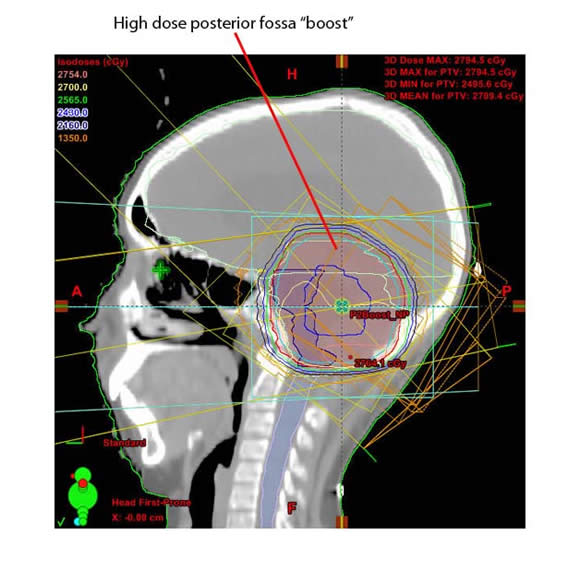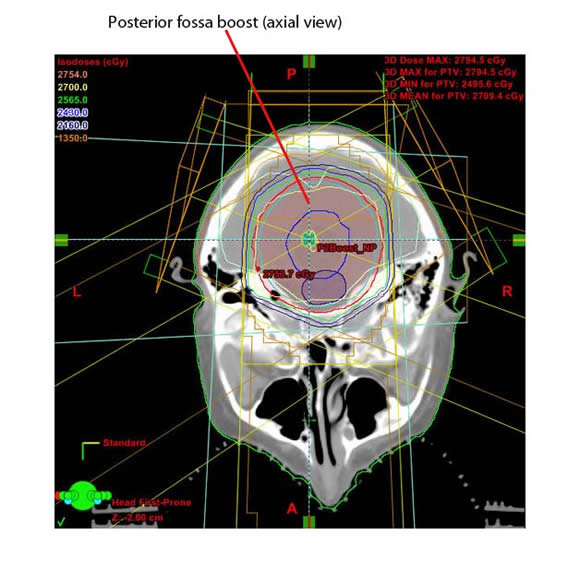Dosimetry
This is the ability to map out how the radiation therapy (RT) dose is "distributed" inside the patient. Different questions can be answered:
- Is the RT dose evenly spread out (homogenous) in the area that needs high dose therapy?
- Are there areas where the RT dose is too high and is that in an adjacent critical structure which might be damaged?
- Are there areas where the RT dose is too low and is that in an area of tumor that needs treatment?
Target Volumes
The planning process involves identifying and drawing on to multiple slices of the CT planning scan the following structures:
- The tumor - this is called the GTV or Gross Tumor Volume.
- The tumor plus a margin for microscopic spread - this is called the CTV or Clinical Target Volume.
- The tumor plus a margin to account for microscopic tumor spread and plus another smaller margin to account for day to day set up variability. This is called the PTV or Planning Target Volume.
- Adjacent critical normal structures (that can only tolerate a certain amount of radiation before serious damage is sustained) are also identified. Examples of critical structures are the spinal cord, the kidneys and the eyes.
Brain tumor Example:
Below is an example of a childhood brain tumor (medulloblastoma). This tumor began in the posterior fossa. To prevent local recurrence after surgery, the tumor bed in the posterior fossa is given a high dose radiation therapy (RT) boost.
- The blue line which makes a central round shape identifies the GTV
- The light blue line identifies the CTV
- The red line identifies the PTV
 Once these areas of interest have been identified, then radiation therapists, radiation oncologists and medical physicists work together to design a treatment plan.
Once these areas of interest have been identified, then radiation therapists, radiation oncologists and medical physicists work together to design a treatment plan.
Multiple fields are used which enter the brain at different angles, so that the high dose volume conforms to the PTV. The red area inside the PTV in this example is treated uniformly to a high dose and surrounding normal tissues are spared.
Below is an axial view of the same treatment plan:

Abdominal Tumor Example:
The scan below is a CT planning scan. The patient is being treated with an oblique parallel pair entering from the front and back (yellow lines).
There is one remaining kidney (outlined in green) and the radiotherapy treatment beams are angled to avoid this critical structure.
Isodoses are shown on the left of the picture below (100...95...). These isodose lines are like the contour lines on a map and join up all the areas that "see" the same amount of radiotherapy - for example 100% of the absorbed dose, 95% of the absorbed dose.
Looking at all the isodoses produces a "dose distribution" map and one can work out how evenly the RT dose is distributed and how well the tumor is covered by the high dose volume.


